The Pros and Cons of Bottling vs Kegging Homebrew
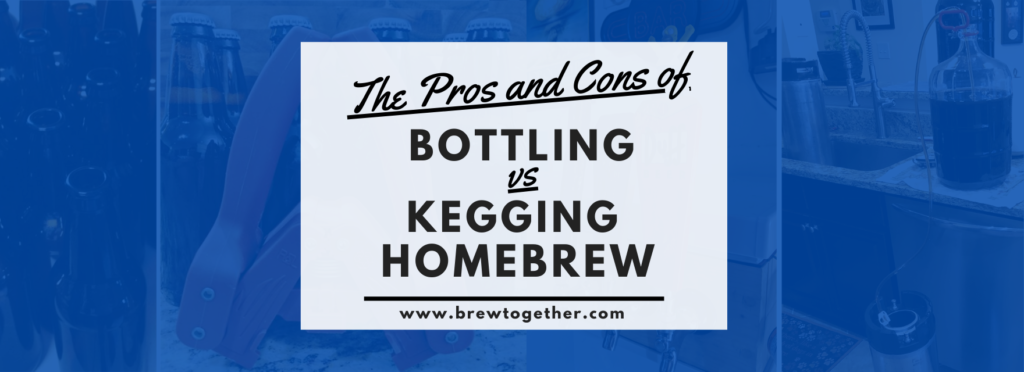

Throughout the course of your homebrewing career, you may find that you pass through several phases of brewing process, complexity, and equipment. As you become a more serious brewer, one of the biggest upgrade decisions you will make is deciding between bottling vs kegging your homebrew.
There are several types of kegs, each with it’s own size, capacity, weight, and price. If you want to learn more, check out our Ultimate Guide to Kegs!
There are several pros and cons associated with both bottling and kegging, and each must be considered when deciding which is the best choice for you. Need some help deciding? Here is an overview of the pros and cons of bottling vs kegging homebrew!
The Pros and Cons of Bottling Homebrew
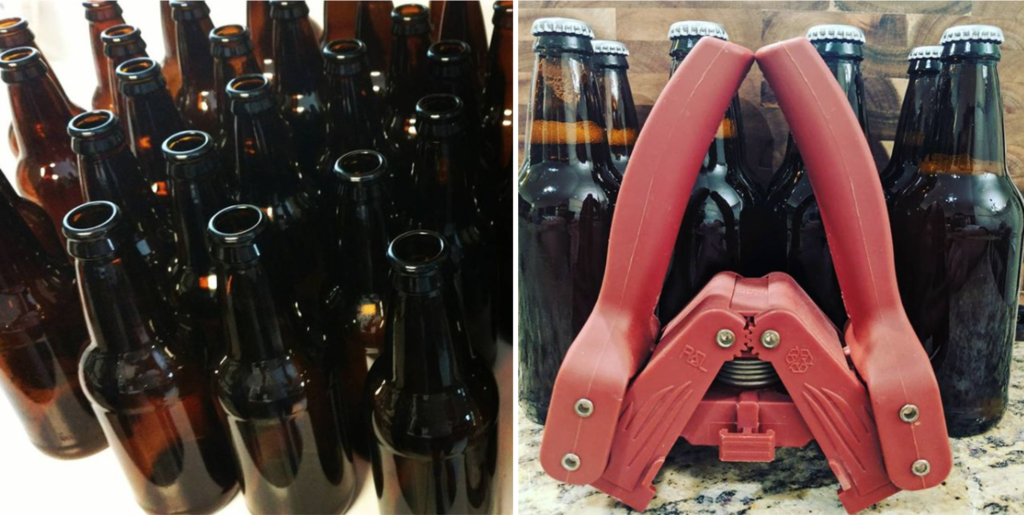

Pros of Bottling Homebrew
- Bottling is much cheaper than kegging, because it requires less specialized equipment. Even though you don’t need as much equipment for bottling, you will still need:
- A bottling bucket
- Transfer tubing
- A bottling wand
- A bottle capper
- Crown caps
- Priming sugar or carbonation drops
- Bottles, but you can get the bottles for free! Just ask your friends and family to hang onto leftover bottles for you. Just remember you need crown cap bottles, not twist-offs!
- You can get an essentially unlimited supply of bottles for free, making there almost no limit to the amount of homebrew you can have on hand.
- Bottling is a simpler process than kegging.
- Bottles take up less space than kegs, both in terms of the space needed for storing equipment as well as the space needed for storing the beer itself.
- Bottled beer is more portable than kegged beer, and is easier to share with friends.
- Bottled beer is easier to enter beer in homebrewing competitions.
- You can have an unlimited number of different bottled beers available at the same time, but with kegging you are limited to the number of kegs you have and the number of taps on your kegerator or keezer.
Cons of Bottling Homebrew
- The process of bottling takes more time and is more work than kegging.
- Cleaning and sanitizing bottles is a lot of work compared to cleaning and sanitizing a keg (especially with a DIY keg and carboy washer!)
- Bottle conditioning takes about two weeks for carbonation, which is much longer than the two or three days that beer takes to force carbonate in a keg.
- Carbonation can be inconsistent in bottles if priming sugar does not mix in well, which can leave some bottles flat and some bottles over carbonated.
- Bottled beer is not generally as clear as kegged beer.
- Natural carbonation in bottles leaves sediment in the bottles due to the yeast left after converting the priming sugar to alcohol and CO2.
The Pros and Cons of Kegging Homebrew
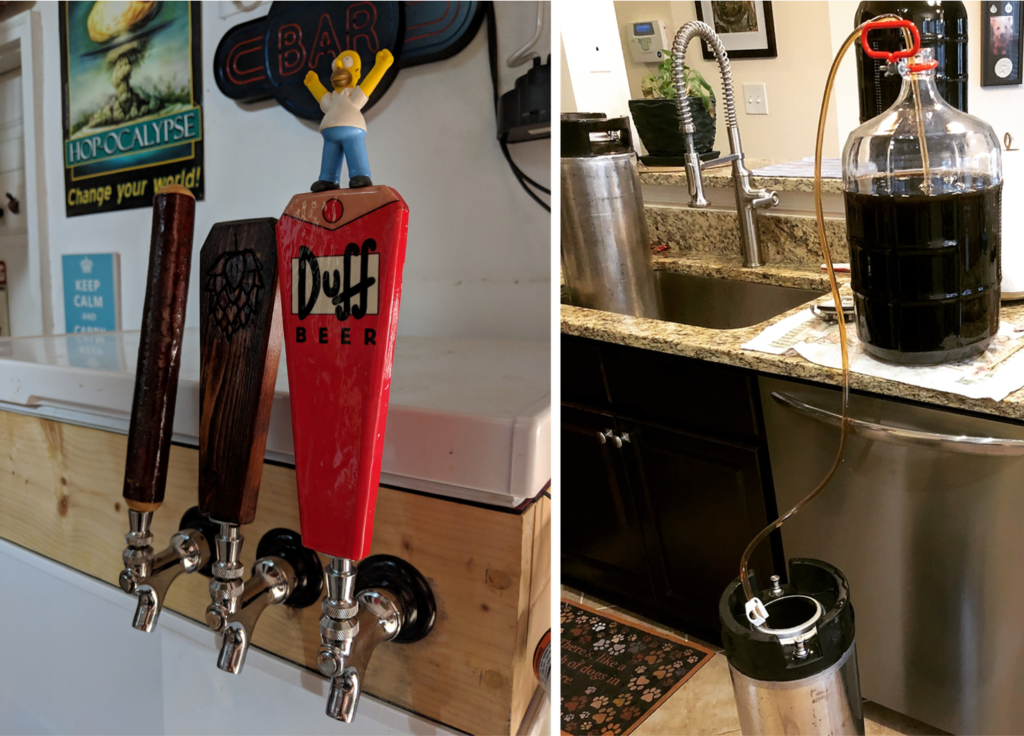

Pros of Kegging Homebrew
- It takes much less time to keg 5 gallons of beer than to bottle it!
- Cleaning and sanitizing a keg is much easier than cleaning and sanitizing bottles, especially with a DIY keg and carboy washer!
- Force carbonating beer in a keg takes much less time in a keg (usually 2-3 days) than bottle conditioning beer does.
- Carbonation in kegs is completely consistent, and can be adjusted to the exact level desired.
- Kegged beer generally has better clarity than bottled beer.
- Kegged beer is very convenient and you can have any amount of beer you want rather than in increments of 12oz. This is especially convenient for pouring flights!
- Having beer on tap at home is AWESOME! There is nothing cooler than the first time you pour yourself and a buddy a nice cold pint at home! It will definitely make you popular!
Cons of Kegging
- Kegging is expensive! You need a lot of equipment to get started with kegging, including:
- Kegging requires more maintenance than bottling, as you will need to regularly clean beer lines and faucets.
- Kegs can be a pain to take apart (here’s how to disassemble and clean them).
- Kegging requires a lot of space, both for storing equipment as well as a dedicated space for your kegerator.
- Kegged beer is not as easy to share with friends or to enter beer in homebrew competitions as bottled beer is. You’ll need growlers or a bottle filler like a TapCooler, Last Straw, Blichmann Beer Gun, or our favorite, the Boel iTap (click here to see our review of the iTap).
- Kegging is a more complicated process than bottling and takes a couple of tries to get comfortable with.
The Pros and Cons of Bottling vs Kegging Homebrew Infographic


Where should I get my bottling or kegging supplies?
We recommend buying your kegging or bottling supplies from one of the following retailers:
What is the better option between bottling vs kegging homebrew?
I enthusiastically recommend kegging for anyone who can do it. It is incredibly satisfying to have beer on tap at home, and I love knowing I don’t ever have to bottle 52 beers again unless I really want to. Still, there are times that I find myself needing to bottle a few beers. Luckily there are some great bottling systems out there that allow you to bottle directly from your kegs, like the TapCooler, Blichmann Beer Gun, or our personal favorite, the Boel iTap (click here to see our review of the iTap). There’s nothing wrong with bottling, but kegging is the best upgrade for homebrewers since switching to all grain, and if you’re like me, you’ll love every minute of it!
Thanks for Reading!
Have a strong opinion as to why kegging vs bottling homebrew is the best choice? Still have questions about which you should choose? Leave a comment below or post in the forums!
Thank you for reading! If you like this article, please share it with your friends using the social media share buttons below!
If you’re not a member of BrewTogether, we’d love for you to join! BrewTogether is completely free, and signing up is easy! Click here to join!
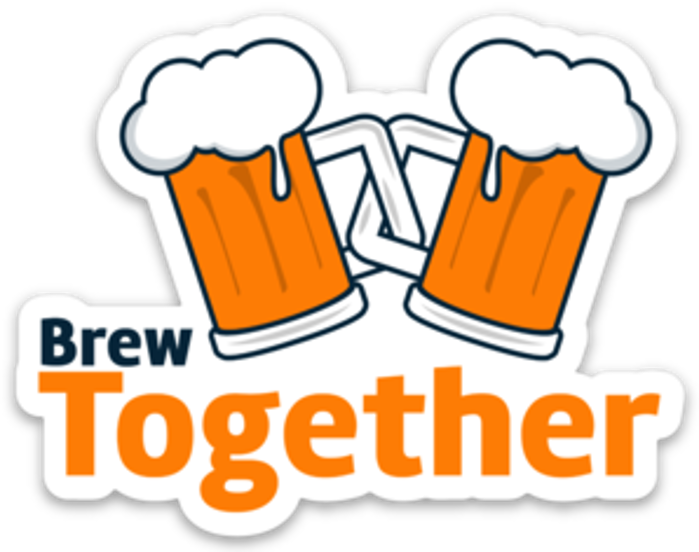
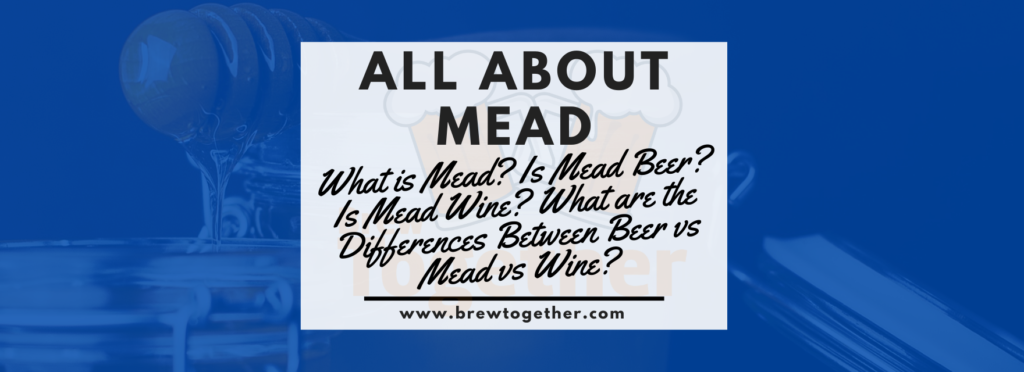
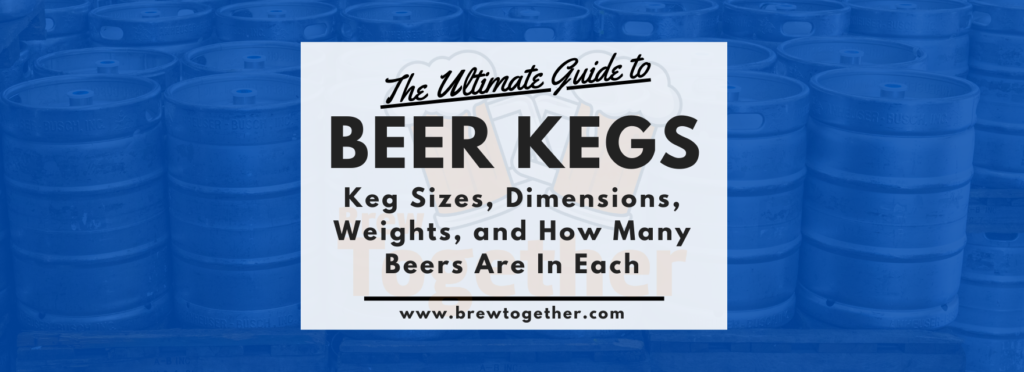



Hmmm…did I miss it or is the central question is there a taste difference between kegging or bottling? I would hazard this may well be the paramount reason for bottling. My palate tells me there is more depth in a bottled beer. But, I’ve only tasted a limited number of kegged beers. I’ve got 65 home brews under my belt am reluctant to spring to kegging due to the costs and my perceived taste payoff. Finally, I think bottling is more organically fun. Waiting for two or three weeks to taste the results increases the expectation factor. Thoughts?